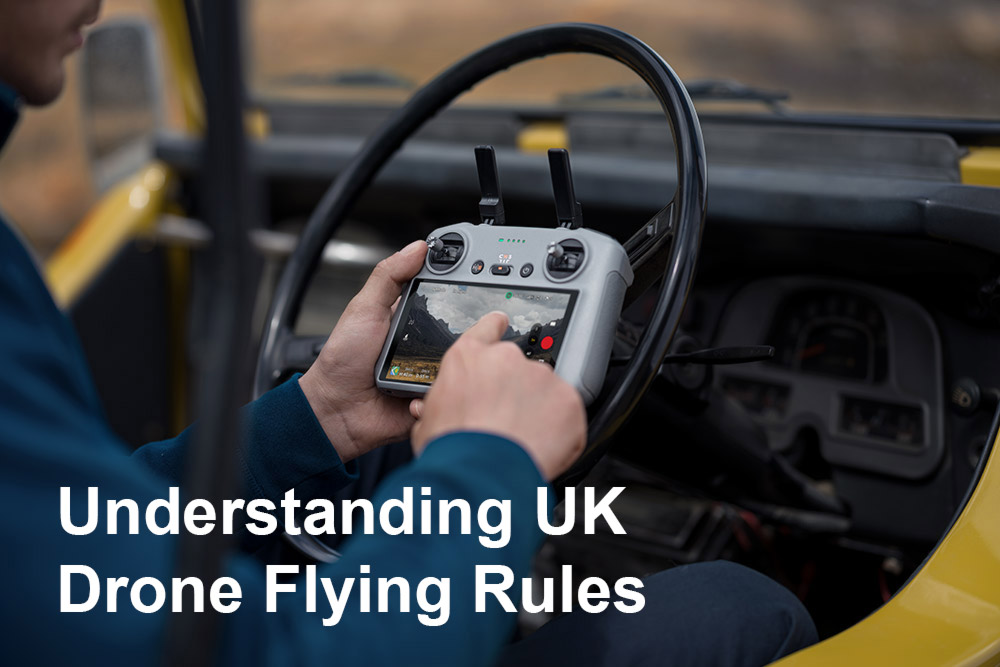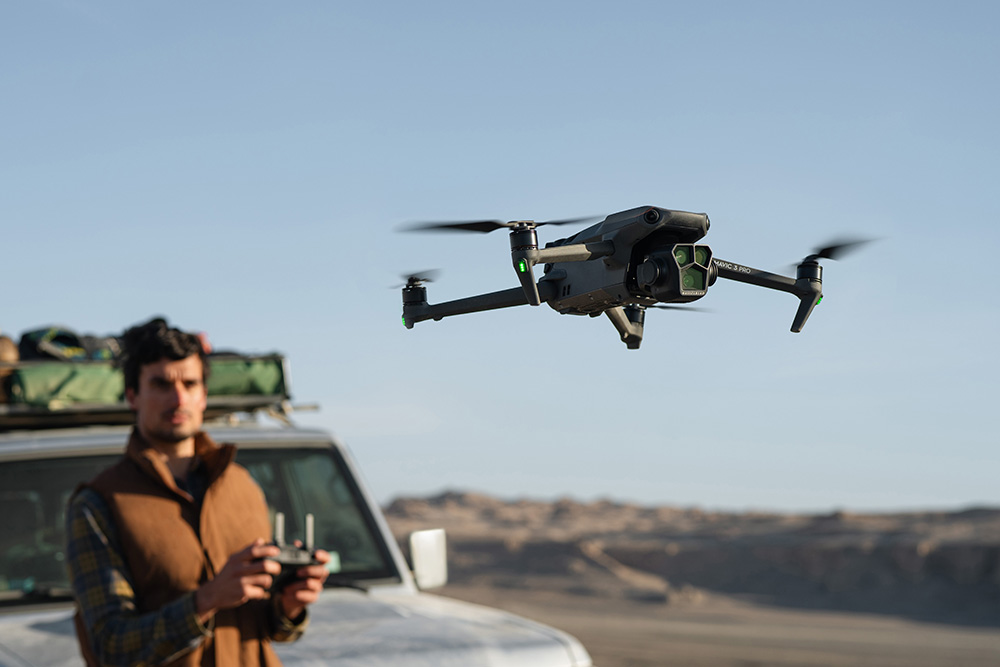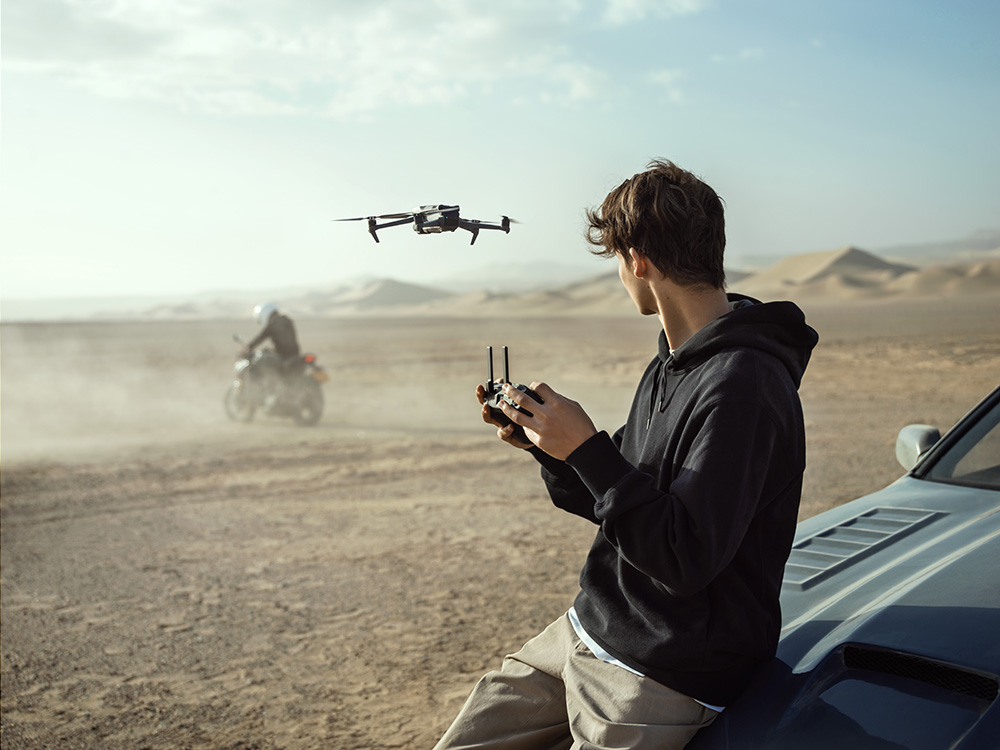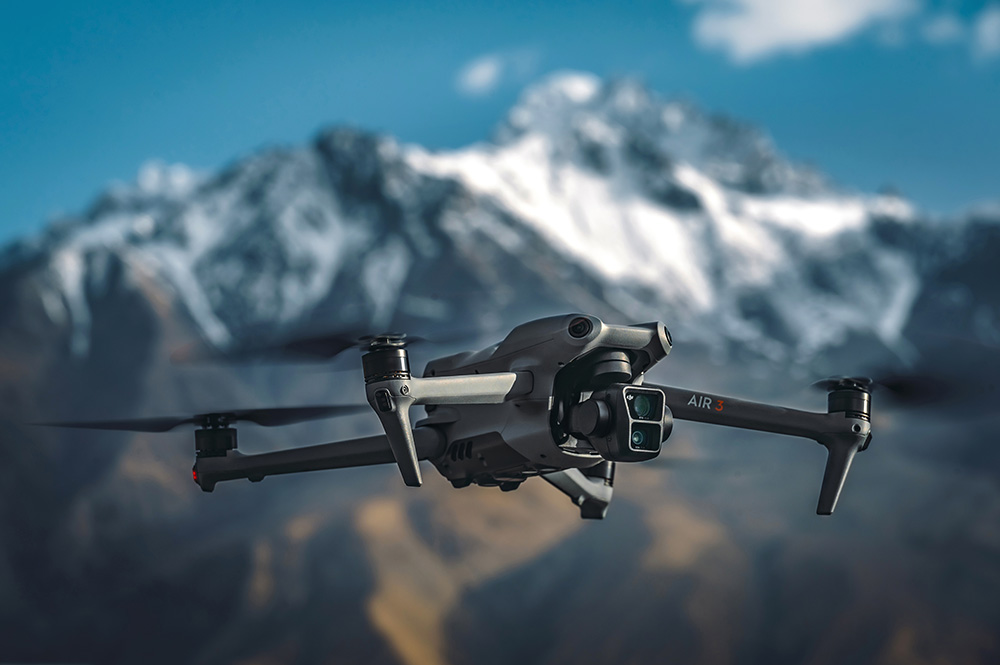- Call us: 01444 237070
- Contact Us
- Stores
- Sign In / Register
-
- Back
- Used Cameras
- Used Lenses
- Used Video
- Used Film Equipment
- Used Stock Alert
- Used Accessories
- Recently Added Used Equipment
- Used Clearance
- Faulty
- Park Picks
- Sell or Part Exchange
- Trade-In
- Blog
- New in
- Call us
- Contact us
- Stores
- Sign in
- Categories
- Tips & Inspiration
- Reviews
- News
- Events
- Features
- Buying Guides
- Competitions
Understanding UK Drone Flying Rules
In the last decade, technological advancements have made drones hugely popular among photographers and videographers, with industry names like DJI and others taking the forefront with new state-of-the-art drones and accessories. Understanding drone flying rules UK is essential to those wanting to get started with aerial photography and footage – this guide details all you need to know for anyone asking are there laws about flying drones.

Drone Flying Rules UK
We’ve got you covered with everything you need to know to start flying drones in the UK and capturing some brilliant aerial shots and footage. While useful, drones need to be used cautiously to avoid causing a nuisance, so before flying, you must understand drone flying laws to ensure your drone use is safe and doesn’t intrude on others’ property or space.
Our guide runs through your role and responsibility as a drone pilot; the rules you must obey when flying over others’ property; registration; certification; and restrictions on specs like drone size and weight. Park Cameras stocks a wide range of different drones, and we encourage you to learn and adhere to the different regulations relating to each one to ensure you get the best (and safest) experience using your product.

What is a drone?
A drone refers to a remotely controlled aircraft - the term now primarily pertains to the commercially available systems equipped with a camera, with a strong focus on photography and content creation.
There are a variety of options you can choose from, including budget options like the lightweight DJI Mini 3, which is perfect for beginners and comes with convenient features like Auto Take-Off that make drone control a breeze. The tiny Autel EVO Nano is another good budget choice that folds into the palm of your hand.
For those looking for professional content, DJI’s Mavic 3 Pro takes care of all scenarios with three powerful 4K cameras. Pro filmmakers will look to the Inspire 3 for professional cinematography, which includes a full interchangeable-lens camera and outstanding performance, processing 8K footage and implementing Apple ProRes RAW codecs with ease.
It isn’t hard to see why their presence is growing - drones are easy to control, enjoyable to use and provide a unique viewpoint for both beginner and professional content. However, the nature of a drone means it can present a real hazard to people, aircraft and natural areas if not used within the laws for flying drones.

Rules on flying drones over private property UK
The UK rules on flying drones require you to keep a safe distance at all times to ensure that your drone use remains safe. You need to ensure that your drone is 50 metres away from people or any private property at all times – as a drone pilot, it’s good to be prepared to increase that distance to be certain that you’re not crossing any boundaries.
If you fly a drone over someone’s property, they reserve the right to take legal action against you for violating their privacy, so flying close to someone’s house without permission, for instance, is not a good idea. Large organisations, for example the National Trust, prohibit drone pilots from flying on their properties, so before shooting outdoors for instance it’s good to check with the owners of the land.
You can fly within 50 metres of people who are involved in your drone flight, like friends, family, or colleagues, but remember to still avoid putting them in danger.
Residential, recreational, commercial and industrial sites require you to keep 150 metres away. It goes without saying that you should stay well away from airports, airfields and aircraft when flying your drone – it is easier than you may think to endanger the safety of aircraft with a drone, and doing so could spell trouble, for instance risking a five year prison sentence. A single drone affected 140,000 passengers and grounded 1,000 flights at Gatwick Airport in 2018 – incidents like these highlight the importance of staying aware of your drone’s surroundings to ensure safety and avoid potential mishaps.

What are a pilot’s main responsibilities?
As a drone pilot, you need to know how to fly your drone safely, and within the law – you’re legally responsible for every flight and must ensure that you’re following drone flying rules. Keeping your drone in sight and staying below 400ft is a must for ensuring a good, safe flight. Always observe the distance regulations outlined previously too.
Outside of legal obligations, being a responsible drone pilot involves thinking ahead. If, for example, you lose control or your drone fails, you need to know where it may land or if you’re far away enough from others to avoid causing a hazard. While being a drone pilot brings a new level of freedom to your photography and videography, you need to think hard about where you’re shooting and what to do if something goes wrong. Modern drones like the DJI Mavic 3 Pro are starting to implement advanced safety features like route planning and an automatic return to home (RTH) ability for peace of mind.

Do you have to register a drone in the UK?
Everyone should be able to reap the benefits of aerial photography, but you need to register (and in certain cases take a test) before you fly to ensure you’re responsible and willing to follow the rules for flying drones in the UK. As a drone owner, you need to register for an Operator ID – this lasts for a year and will set you back £10.33. If you don’t own a drone but want to borrow someone else’s, you still need to apply for a flyer ID, which is fortunately free, and will last 5 years.
Drone Weight Law
The drone weight law varies based on whether your drone weighs more or less than 250g. For instance, laws on flying drones like the DJI Mini 3, which weighs less than 250g requires fewer regulations than the heavier Mavic 3 Pro. Drones lighter than 250g can fly within 50m of people, and can fly over people too, although you should still avoid flying over crowds. A drone larger than 250g can do the same if you get an A2 Certificate of Competency, which requires a theory test.
The UK Civil Aviation Authority (CAA) is the ruling authority on all aviation matters in the UK, including drones. Registration can be completed on their website.

What are the three Open, Specific and Certified categories?
Based on what you want to use your drone for, you need to adhere to different regulations surrounding your drone. The categories are as follows:
- Open A1 and A3 is the starting point for anyone wanting to fly a drone. This category surrounds basic, low-risk flying.
- Open A2 involves more risk than A1 and A3, so if you’re looking to do more advanced flying with this category you need to apply for an A2 Certificate of Competency (CofC).
- Specific involves moderate risk, for example flying over an urban area – the key part of this is that the operator needs to hold an authorisation granted by the CAA. You must do a risk assessment of what you plan on doing with the drone.
- Certified is the highest category – this involves operations that present a risk to aviation, and only applies to a very specific group of drone operators.
ID and drone registration
There are two IDs you may need before flying drones outdoors in the UK and you might need to have both:
- flyer ID, which shows you’ve passed the basic flying test
- operator ID, which must be labelled on your drone or model aircraft
The IDs you need depend on the weight of your drone or model aircraft, whether it is a toy, and whether it has a camera.
Flying weight requirements table
|
Flying weight |
ID needed |
|
|
Flyer ID |
Operator ID |
|
|
below 250g - toy |
No |
No |
|
below 250g - not a toy - no camera |
No |
No |
|
below 250g - not a toy - with camera |
No |
Yes |
|
250g and above |
Yes |
Yes |
Using a drone for work
As of 2020, there is no longer any distinction between flying commercially and flying for pleasure or recreation, so you don’t need to be approved to use your drone for your business. You should still carefully adhere to the rules on proximity to others and receive the correct authorisation for your category of drone operations.
Ensuring you know the drone flying rules in the UK is the key to a successful experience with your drone. By knowing what you’re doing, thinking ahead and exercising caution, you can quickly become a responsible drone pilot.
Discover our range of drones here - whether you’re a complete beginner or a more experienced pilot, our comprehensive selection of drones and accessories caters to all uses and budgets. When buying or operating your drone, our customer service team is happy to answer any further questions that may arise.
Share this post:
By Thom Pyle on 16/08/2023

Trade in your old equipment
Fast and easy trade in service ensures your old gear is collected efficiently and you are paid quickly! It's very simple to trade in your unwanted photography gear. Just head over to our dedicated Sell or Part Exchange page, fill out the details, and we'll get back to you with an offer for your old gear. Take the cash, or put it towards the cost of your new gear. It's up to you! Find out more
sign up to the newsletter
Keep up to date on the latest photography news, events and offers. Sign up now
